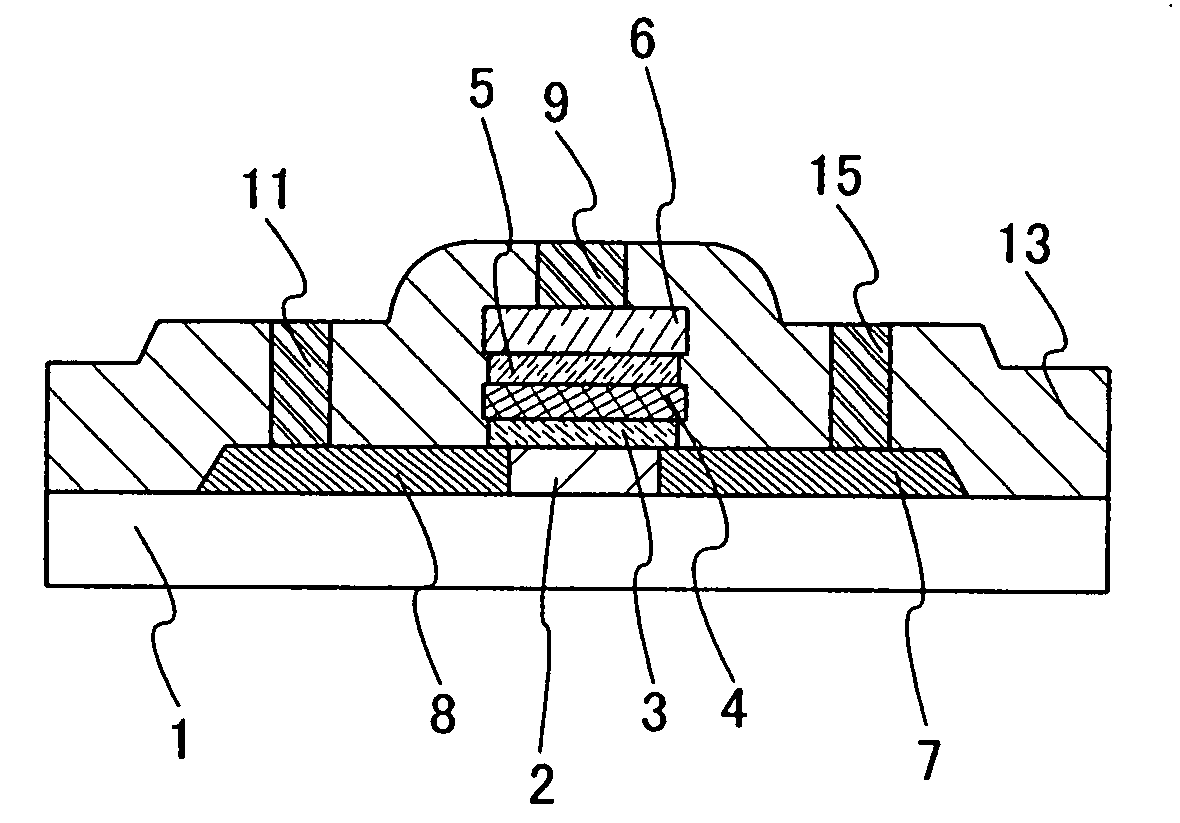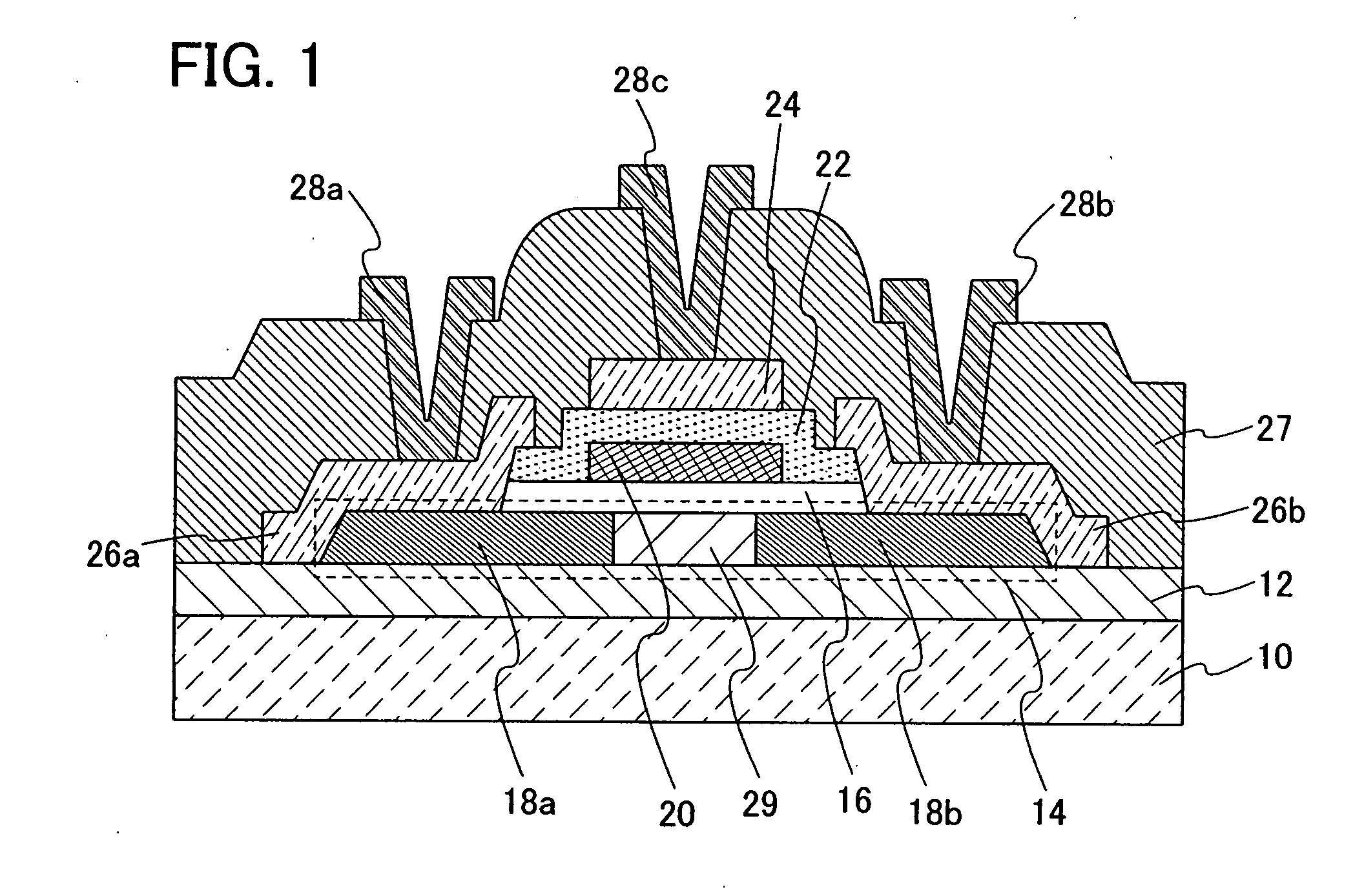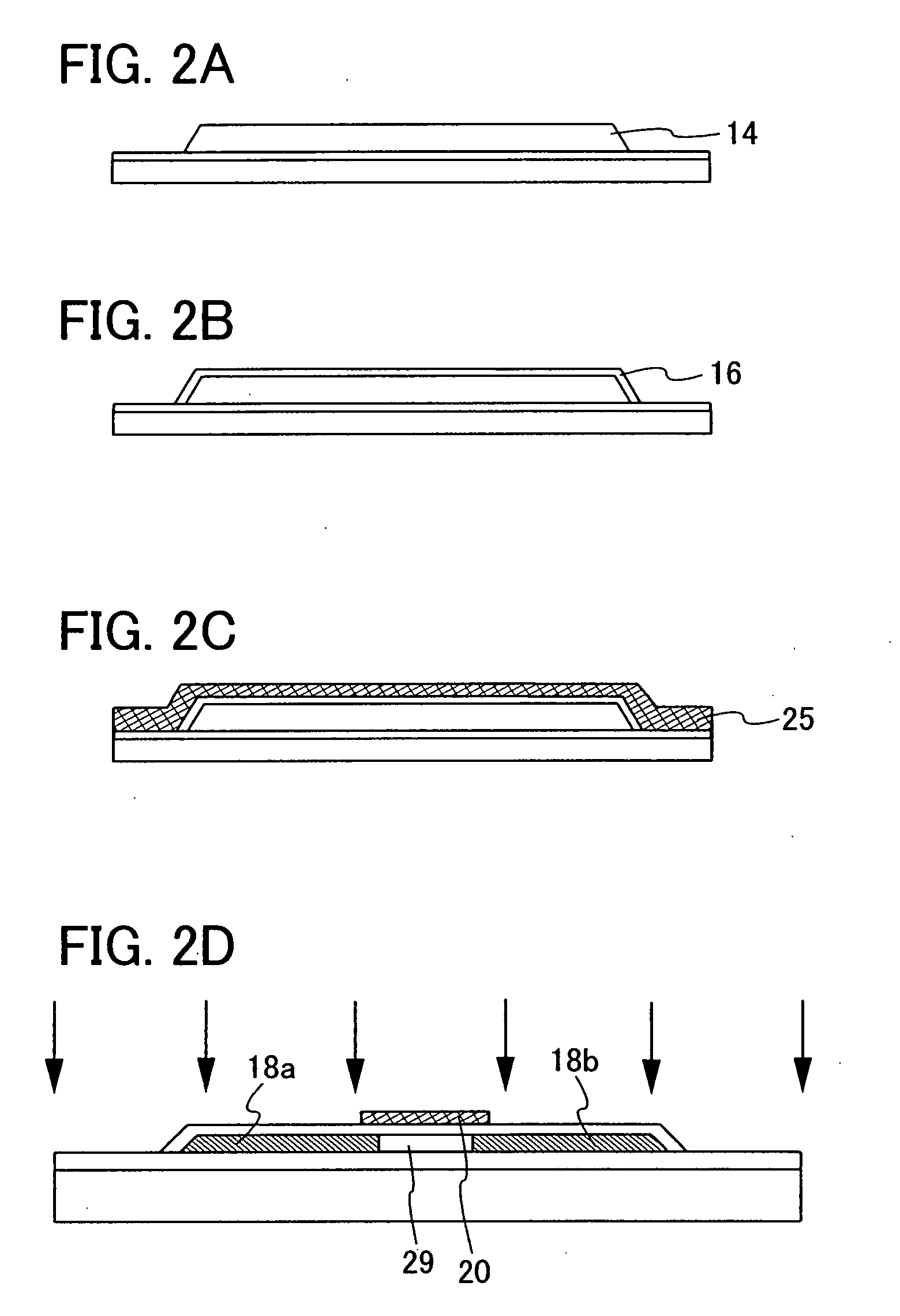Nonvolatile semiconductor storage device and method for manufacturing the same
a semiconductor storage device and non-volatile technology, applied in semiconductor devices, solid-state devices, instruments, etc., can solve the problems of difficult to obtain high integration, drive capability as a circuit may be degraded, and the tft of a complete depletion layer type cannot be formed, etc., to achieve high efficiency, prevent the increase of the contact resistance value, and low voltage
- Summary
- Abstract
- Description
- Claims
- Application Information
AI Technical Summary
Benefits of technology
Problems solved by technology
Method used
Image
Examples
embodiment mode 1
[0052]FIG. 1 is a cross-sectional view for explaining a main structure of a nonvolatile semiconductor storage device relating to the present invention. FIG. 1 particularly shows a main part of a nonvolatile memory element.
[0053]In FIG. 1, reference numeral 10 denotes a substrate; 12, a base insulating film; 14, a semiconductor layer; 29, a channel formation region; 18a and 18b, source or drain regions; 16, a first insulating film (also referred to as a tunnel insulating film); 20, a floating gate electrode; 22, a second insulating film (also referred to as a control insulating film); 24, a control gate electrode; 26a and 26b, conductive layers; 28a and 28b, source or drain electrodes electrically connected to the source region or drain regions 18a and 18b through the conductive layers 26a and 26b; 28c, a gate wiring electrically connected to the control gate electrode; and 27, an insulating film for passivation.
[0054]In the structure shown in FIG. 1, the base insulating film 12 is f...
embodiment mode 2
[0106]In this embodiment mode, a manufacturing method of a nonvolatile memory element that has a different structure from that of the nonvolatile memory element shown in FIG. 1 will be explained. In this embodiment mode, a nonvolatile memory element shown in FIG. 11 will be explained. In the nonvolatile memory element shown in FIG. 11, a control gate electrode 24 is provided with sidewalls 300.
[0107]In FIG. 11, reference numeral 10 denotes a substrate; 12, a base insulating film; 14, semiconductor layer; 29, a channel formation region; 18a and 18b, source or drain regions; 16, a first insulating film (also referred to as a tunnel insulating film); 20, a floating gate electrode; 22, a second insulating film (also referred to as a control insulating film); 24, a control gate electrode; 300, a sidewall; 26a and 26b, conductive layers; 28a and 28b, source or drain electrodes electrically connected to the source or drain regions 18a and 18b through the conductive layers 26a and 26b; 28c,...
embodiment mode 3
[0121]In this embodiment mode, a structure of a nonvolatile memory, which is different from the structures shown in FIG. 1 and FIG. 11, will be explained with reference to FIGS. 14A and 14B, FIGS. 15A to 15D, and FIGS. 16A and 16B.
[0122]In a nonvolatile memory element shown in FIG. 14A, first impurity regions (source or drain regions) 306a and 306b, second impurity regions 307a and 307b, and the like are provided in a semiconductor layer 14, and a floating gate electrode 20 is formed of a first floating gate electrode 20a and a second floating gate electrode 20b, which are different points from the structures shown in FIG. 1 and FIG. 11.
[0123]In a structure shown in FIG. 14A, a base insulating film 12 is formed over a substrate 10, and the semiconductor layer 14 having the first impurity regions 306a and 306b, the second impurity regions 307a and 307b, and a channel formation region 29 is formed over the base insulating film 12. A first insulating film 16 and conductive layers 26a a...
PUM
 Login to View More
Login to View More Abstract
Description
Claims
Application Information
 Login to View More
Login to View More - R&D
- Intellectual Property
- Life Sciences
- Materials
- Tech Scout
- Unparalleled Data Quality
- Higher Quality Content
- 60% Fewer Hallucinations
Browse by: Latest US Patents, China's latest patents, Technical Efficacy Thesaurus, Application Domain, Technology Topic, Popular Technical Reports.
© 2025 PatSnap. All rights reserved.Legal|Privacy policy|Modern Slavery Act Transparency Statement|Sitemap|About US| Contact US: help@patsnap.com



